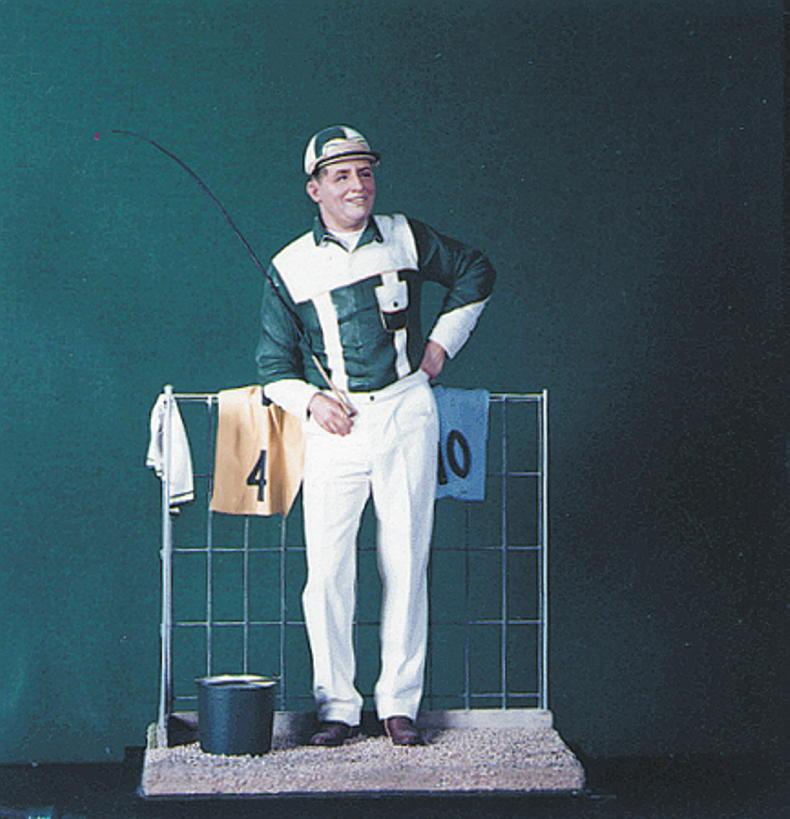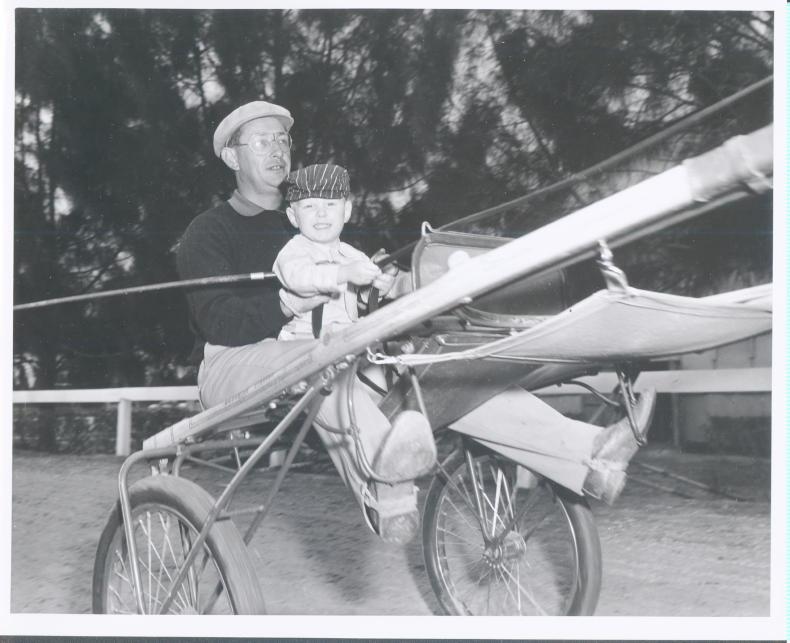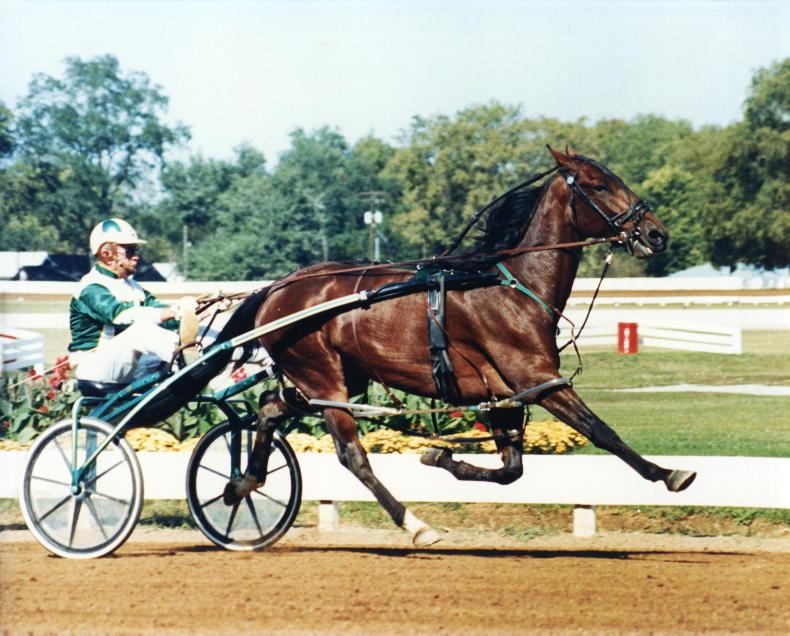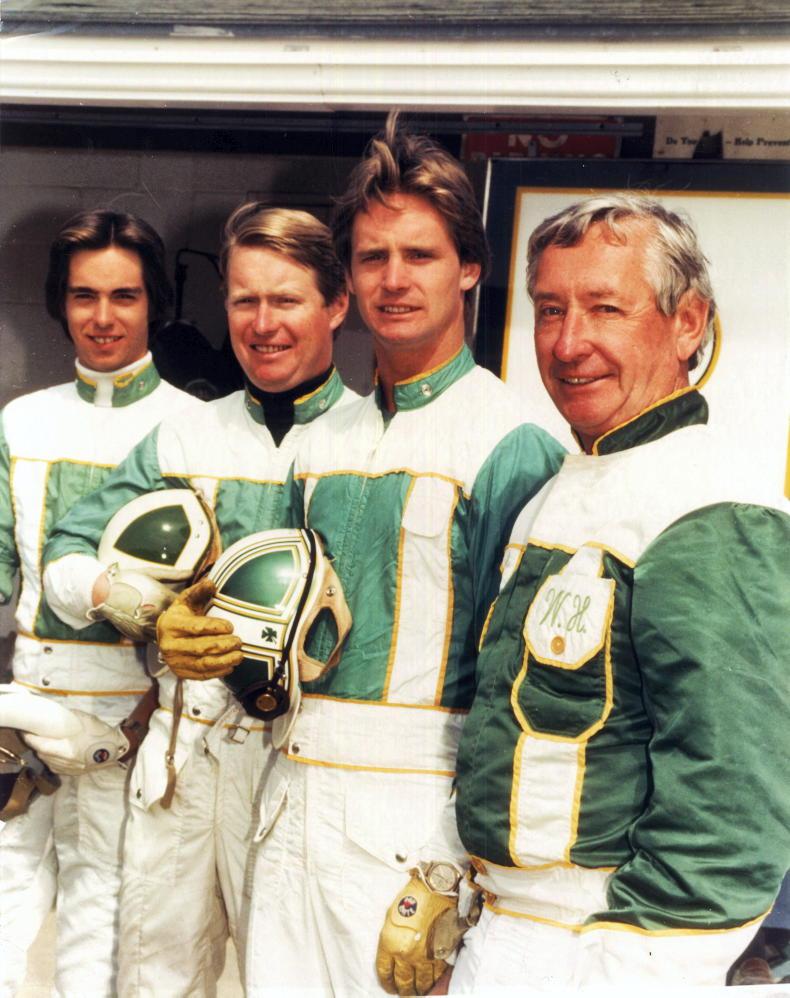WILLIAM Robert Haughton (Billy) (1923 - 1986) ran the largest stable in the USA during the glory years of harness racing.
The nationwide optimism of the post-war years and the emergence of floodlit stadia in the major cities, meant that Billy Haughton became well known even beyond the sport.
Pioneers like George Morton Levy and his partners who founded Roosevelt Raceway, took the sport from the county fairs of the mid-west and marketed it to a new affluent audience that appreciated the opportunity to dine in glass-fronted grandstands and to gamble in comfort.
It seems strange given the fact that they both drove as greying pensioners, but Billy Haughton and his great friend and rival, Stanley Dancer, were regarded as audacious young pups in the 1950s. They upset the pecking order amongst the drivers’ ‘colony’, as it is still known at a harness track.
Before the emergence of Dancer and Haughton many races were run at a sedate pace, with the action only coming alive at the three-quarter pole. The two newcomers, and particularly Dancer, challenged the status quo. They had their horses super fit and were not scared to send them early, knowing they would last home.
Gold Dust Twins
The two young men often filled first and second slots in individual races or in the leading driver standings. The newspapers christened them ‘The Gold Dust Twins’.
Stanley Dancer has already featured in The Irish Field, so today we will look at his equally revered competitor. Billy Haughton’s colours were a deep green with white braces. Imitation is the greatest form of flattery and on these shores a young James Murdock and the Gill stable at York copied the white on green theme.
Haughton, at the peak of his powers had 200 horses in training, dotted across America. Alfred ‘Apples’ Thomas was one of a number of assistant trainers.

Sons Bill junior, Tommy, Cammie and Peter were all involved and the Haughton colours were everywhere. The trade press dubbed the Haughton operation ‘The Green Wave’.
The story goes that Billy first hitched a pony called Betty to a home-made sulky when he was eight. He was reared in Fonda, New York, where his father was a harness trainer.
He rode some thoroughbreds at county fairs with little success before he made his breakthrough in trotting, primarily as second trainer to a man named Billy Muckle.
Throughout his life Billy would always credit Muckle with giving him a proper grounding. The green and white colours were chosen to match his college basketball team and also Vic Fleming (driver) who was a boyhood hero of Haughton’s.
Roosevelt Raceway opened in 1940 and around 1956 underwent a major facelift. From 1951 to 1975 the attendance consistently topped 15,000 per night. The much older Yonkers Raceway (est. 1899) also flourished at that time with ‘WRH’ winning every yearly driver’s title in the 1950s except for 1956 when Dancer borrowed the crown.
Overnight horses
At the big metropolitan tracks, the horsemen were working with ‘raceway’ horses (you might say handicappers) encouraged by the management to make up 12 and 13 race cards. Haughton drove and trained hundreds of these types, sometimes called ‘overnight horses’ in the States.
Classic races are what every driver wants to win, and once Haughton broke onto The Grand Circuit (the moving feast of two- and three-year-old stakes races, across New York, Pennsylvania, Kentucky and Ohio) he soon started accumulating silverware.
By the time of Billy’s unexpected demise, he had driven the winners of four Hambletonians, five Little Brown Jugs and seven Messenger Stakes.
Amongst the top horses he trained and/or drove were Green Speed, Handle With Care, Rum Customer and Armbro Omaha.

Defining moment
In 1985 he caused a sensation by getting off the supposed wonder horse Nihilator himself and putting the much younger Bill ‘The Magic Man’ O’Donnell in the sulky for the ‘Jug’.
Haughton was one of the last generation of true trainer-drivers to drive his own stock.
His deference to O’Donnell was a defining moment and meant that ‘catch-drivers’ (freelances who try to get on the best horse, regardless of trainer) were here to stay.
Suffice to say, the tactic worked and Nihilator stormed home under a typical O’Donnell aggressive drive.
Consummate horseman
Murray Brown, formerly of Hanover Shoe Farms in Pennsylvania said that Billy Haughton was “the most unique individual I have known in this long life” and added “he would always look for the best in horses and people”.
Janet Terhune, director of the Harness Racing Hall of Fame, called Haughton the ‘consummate horseman’.
Dancer was known for buying the top lots at the yearling sales whereas Haughton also dabbled in the bargain basement of the auction as he had a wider range of owners with budgets. The legend is that he tried to view every yearling at the sales.
In 1968 the United States Trotting Association published a 1,000-page textbook The Care and Training of the Trotter and Pacer. Fourteen industry figures each contributed on subjects as diverse as shoeing, breeding, breaking and so on.
Master class
Billy Haughton gave the volume two chapters ‘Selecting The Yearling’ and ‘Driving The Race’. The yearling section in particular is a master class. The entire book is written in an easy conversational tone by ghost writer and pedigree expert Jim Harrison.
Amongst Billy’s pearls of wisdom were “if a horse has the kind of breeding I like, I don’t believe I would knock him out because of size unless he were a real pony or an ungainly giant.”
He also shared a nice tip about checking the width of a horse’s jaw bones below his jowls and contended that yearlings with a narrow passage at the back of the head did not amount to much as racehorses.
Haughton’s chapter on yearling selection rings true across many breeds. The official records show that Billy Haughton drove 4,910 winners to earn $40,160,336. That’s a lot of corn in the 1960s and 1970s. He must have picked a few decent ones along the way.
Double tragedy
Amongst all this success and the glamour of a burgeoning sport came two real tragedies. In January 1980 his third son Peter, a promising driver, was killed in a car accident after racing at The Meadowlands.

1999 – Billy Haughton with son Peter in happier times
A Hollywood-like story came true when Billy, at that stage 57 himself drove his late son’s intended horse, Burgomeister to win that summer’s Hambletonian Stakes, the sport’s blue riband for three-year-old trotters. Obviously, there was not a dry eye in the house.
Harness racing, for all its close-up driving, fragile looking sulkies and tight tracks actually gets far less falls and accidents than outsiders perceive.
Therefore, it was cruel and ironic that Billy Haughton lost his life racing a two-year-old at his beloved Yonkers in July 1986.
The sport was dumbfounded. Billy had been wearing an older style helmet. Bill O’Donnell had ordered an improved helmet for his old friend which arrived a couple of days after the accident.
Following 10 days in a coma the man known as ‘The Master’ passed away on July 15th 1986, aged 63. He had been slowing down his driving activities but still had much to offer as a trainer, father and grandfather.
He was survived by his wife Dottie (d. 2019) and sons Bill junior, Tom, Cammie and a daughter Holley. Bill and Holley helped with the compilation of this piece as did Janet Terhune of the US Trotting Hall of Fame. Acknowledgements to Bill Heller who wrote Billy Haughton – The Master (Bonus Books 1999). Bill and Tommy are still involved in the sport.
The family commented that their parents always wanted to visit Ireland “but with 200 horses, there was never much free time.”
The Haughton stable did train Grand Prix (1983) (Niatross – Roadlight) who stood at stud at Portmarnock. His best performers were the gelding Double M who won The Famous Musselburgh Pace for Brenda Hudson and the mare River Grand, retained for breeding by John Richardson.
ON the home scene, harness racing lost a popular figure when Paul Boyle (58) from Belfast died following a heart attack on February 1st. Paul drove and trained as a young man.
In recent years he owned Polmaise Cuddles, Sabrecrombie and Shes All That amongst others. Sympathies go to his wife, Penny, son, Paul junior, and family.


 This is a subscriber-only article
This is a subscriber-only article
 It looks like you're browsing in private mode
It looks like you're browsing in private mode








SHARING OPTIONS: